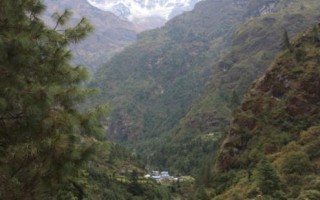
Continued from part 1… We start our second day crossing the Dudh Kosi (Milk River) on a steel suspension bridge about 50 metres (165ft) above the river – it’s a thrilling feeling with mountains on each side and the roaring river below. As we cross, the wind pushes us to one side and you feel […]
view the post

First I would like to kindly thank Sucheta for letting me write a guest entry on her blog! I recently met Sucheta in Nepal where I was re-visiting VIN (Volunteers Initiative Nepal) whom I worked for last year. This year I set up a partner foundation called Friends of VIN (visit our newly launched website Friends […]
view the post